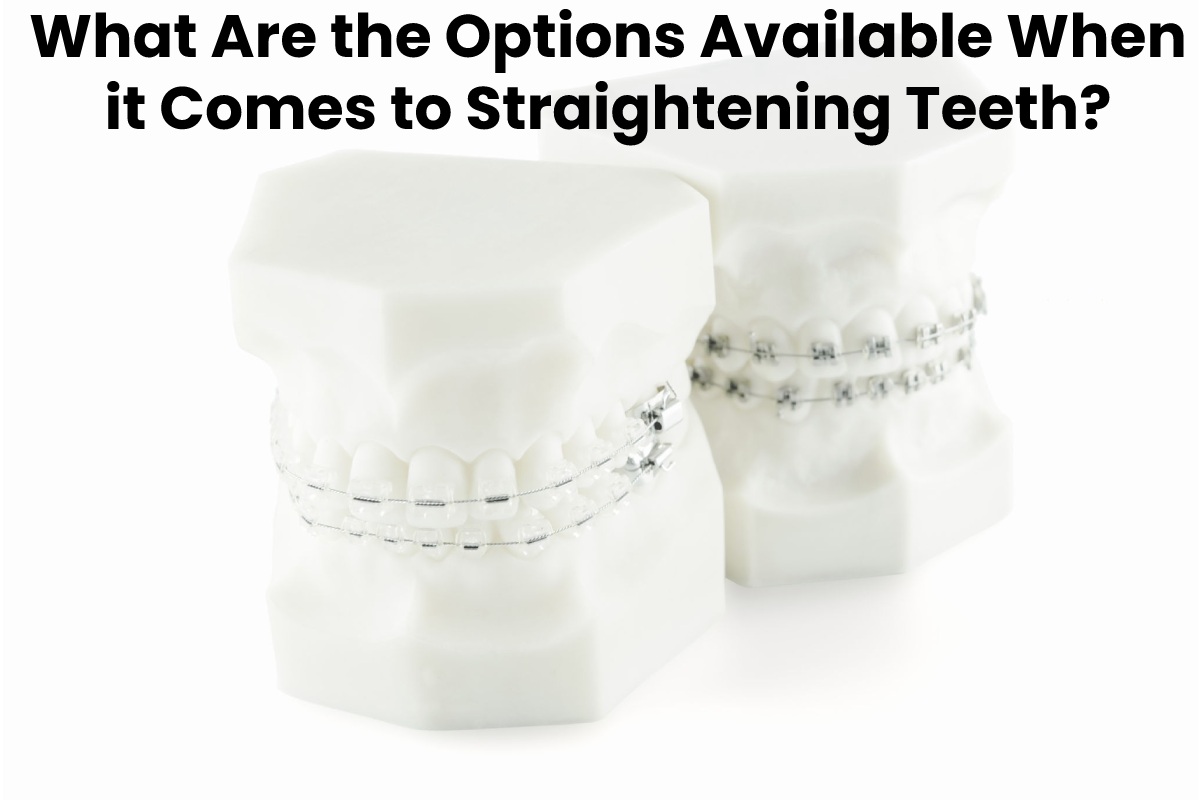Did you know that crooked teeth can be genetic? Jaw shape and size are inherited from our parents, and this can have an effect on how our teeth are shaped. Crowding, hyperdontia (having too many teeth), overbites, and underbites are all genetic. However, crooked teeth can also be caused by childhood habits, such as thumb-sucking and prolonged pacifier and bottle use.
There are many options out there when it comes to naturally whitening teeth, but are there that many options out there for straightening them? The short answer is no, there aren’t any approved safe ways to naturally straighten teeth— but you do have a few other options available to you.
Also, you can prefer the expert orthodontist Warrington that make your dental treatment successful.
Table of Contents
#1: Surgery and Other Appliances
Dental surgery is reserved for extreme cases, such as impacted teeth. These are teeth that have not broken through the gums, or they have and they’re crowding the other teeth. This is often the case with wisdom teeth because the mouth isn’t large enough to accommodate one or more— still, all four are usually removed to prevent jaw alignment issues.
Crossbites and underbites may need an additional appliance to help straighten the teeth. One of the most common appliances to correct these issues is a palate expander. Braces are typically used to correct overbites.
#2: Cosmetic Dentistry
Cosmetic dentistry usually refers to dental procedures that improve the appearance of the teeth, rather than improving the functioning of teeth. Examples of cosmetic dental procedures include:
● Bleaching
● Bridges
● Composite bonding
● Crowns (implants)
● Inlays and Onlays (fillings)
● Veneers
Porcelain veneers are coverings for the teeth. They can help improve the appearance of crooked, gapped, missing teeth, and a variety of other dental issues. However, this is a costly (up to $1,000 per tooth) and invasive procedure that requires an orthodontist to shave down your natural teeth before permanently adhering the veneers.
#3: Braces and Retainers
Braces are attached to the teeth to gradually move them into the desired position, and retainers are often used after braces to keep the teeth from shifting. Retainers can also be used alone as a way to straighten teeth.
Self-Ligating Braces
These types of braces can be ceramic or metal, and they’re held in place with clips rather than rubber ties. They’re also not as complex to put on, making them ideal for patients who have trouble sitting still for long periods of time and those sensitive to discomfort.
Metal Braces
Metal braces are the most common type of braces, particularly among teens and older children. However, they’re not the most discreet way of straightening teeth, and they’re also not the most comfortable— though they are a lot more comfortable than they once were.
Lingual Braces
These types of braces are just like metal braces, except they’re installed behind the teeth. They’re one of the most discreet types of braces, but they’re also the most uncomfortable. Tongue irritation and speech problems are very likely with lingual braces.
Ceramic Braces
Ceramic braces work most similarly to metal braces, except instead of metal they’re made out of tooth-colored material. These are discreet too, as they look just like real teeth. They’re also more affordable than metal braces, but they’re also bigger and can be a little uncomfortable.
#4: Alternatives to Braces
The best alternatives to braces are clear aligners. They are the most popular option among adults, and also among older adolescents. Clear aligners are also less expensive than they once were, so they’re an affordable alternative to metal braces. They’re also probably the most discreet option when it comes to straightening teeth because they’re clear.
Other benefits to clear aligners include the fact that they’re removable. This makes it easier to keep up with your oral hygiene routine. They’re also quicker than braces, and you don’t always need to visit an orthodontist to get them. Other alternatives to braces are also designed to be this simple to give you more flexibility and freedom.
So while you can’t straighten your teeth naturally, there are a variety of options available to you to achieve straighter teeth. Just keep in mind that not everyone is a good candidate for each type of straightening method, so don’t get discouraged. You may not be able to go with a discreet option for straightening teeth, or you may even have to choose a cosmetic dental option if you don’t want metal braces. Also remember that with whatever option you choose for straightening your teeth, it’s still important to take care of your oral health.

